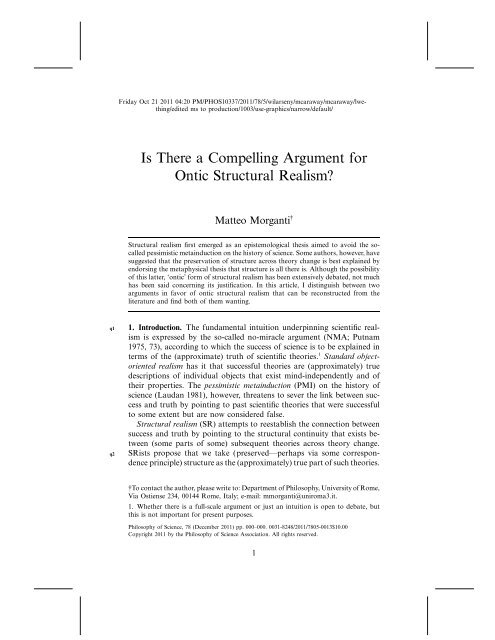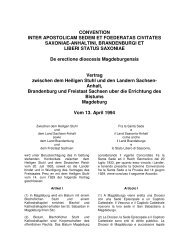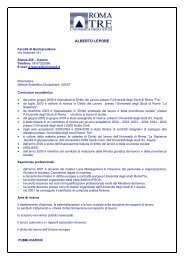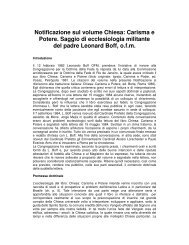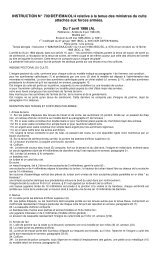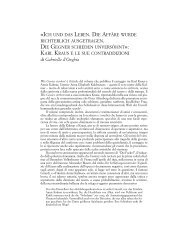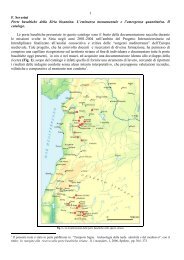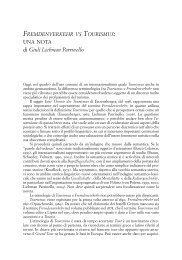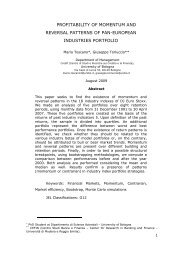Is There a Compelling Argument for Ontic Structural Realism?
Is There a Compelling Argument for Ontic Structural Realism?
Is There a Compelling Argument for Ontic Structural Realism?
You also want an ePaper? Increase the reach of your titles
YUMPU automatically turns print PDFs into web optimized ePapers that Google loves.
q1<br />
q2<br />
Friday Oct 21 2011 04:20 PM/PHOS10337/2011/78/5/wilarseny/mcaraway/mcaraway/lwething/edited<br />
ms to production/1003/use-graphics/narrow/default/<br />
<strong>Is</strong> <strong>There</strong> a <strong>Compelling</strong> <strong>Argument</strong> <strong>for</strong><br />
<strong>Ontic</strong> <strong>Structural</strong> <strong>Realism</strong>?<br />
Matteo Morganti †<br />
<strong>Structural</strong> realism first emerged as an epistemological thesis aimed to avoid the socalled<br />
pessimistic metainduction on the history of science. Some authors, however, have<br />
suggested that the preservation of structure across theory change is best explained by<br />
endorsing the metaphysical thesis that structure is all there is. Although the possibility<br />
of this latter, ‘ontic’ <strong>for</strong>m of structural realism has been extensively debated, not much<br />
has been said concerning its justification. In this article, I distinguish between two<br />
arguments in favor of ontic structural realism that can be reconstructed from the<br />
literature and find both of them wanting.<br />
1. Introduction. The fundamental intuition underpinning scientific realism<br />
is expressed by the so-called no-miracle argument (NMA; Putnam<br />
1975, 73), according to which the success of science is to be explained in<br />
terms of the (approximate) truth of scientific theories. 1 Standard objectoriented<br />
realism has it that successful theories are (approximately) true<br />
descriptions of individual objects that exist mind-independently and of<br />
their properties. The pessimistic metainduction (PMI) on the history of<br />
science (Laudan 1981), however, threatens to sever the link between success<br />
and truth by pointing to past scientific theories that were successful<br />
to some extent but are now considered false.<br />
<strong>Structural</strong> realism (SR) attempts to reestablish the connection between<br />
success and truth by pointing to the structural continuity that exists between<br />
(some parts of some) subsequent theories across theory change.<br />
SRists propose that we take (preserved—perhaps via some correspondence<br />
principle) structure as the (approximately) true part of such theories.<br />
†To contact the author, please write to: Department of Philosophy, University of Rome,<br />
Via Ostiense 234, 00144 Rome, Italy; e-mail: mmorganti@uniroma3.it.<br />
1. Whether there is a full-scale argument or just an intuition is open to debate, but<br />
this is not important <strong>for</strong> present purposes.<br />
Philosophy of Science, 78 (December 2011) pp. 000–000. 0031-8248/2011/7805-0013$10.00<br />
Copyright 2011 by the Philosophy of Science Association. All rights reserved.<br />
1
2 MATTEO MORGANTI<br />
Epistemic structural realism (ESR; Worrall 1989) intends this as an epistemological<br />
position, to the effect that we can be realists about whatever<br />
is described by the (preserved) mathematical structure of our theories.<br />
Ladyman (1998) introduced instead ontic structural realism (OSR), according<br />
to which structure is not only all we can be realist about but also<br />
all there is.<br />
In the past decade or so, the latter idea has been developed further and<br />
has become increasingly fashionable. On the one hand, OSRists have<br />
argued that (1) it is possible to conceive of the world in structural terms,<br />
as there is nothing that remains unaccounted <strong>for</strong> when one subscribes to<br />
a structuralist ontology. On the other hand, OSRists have also contended<br />
that (2) scientific realists should endorse OSR, as a careful consideration<br />
of the best available scientific theories lends stronger support to OSR than<br />
to other noninstrumentalist positions.<br />
The discussion of 1 has occupied most of the literature, and it appears<br />
fair to say that criticisms aiming to show that the proposed ontology is<br />
unworkable do not cause too much trouble <strong>for</strong> OSRists. Relations—and,<br />
consequently, structures—can be primitive (Mertz 2003), and a plausible<br />
structural reconstruction of persistence, change, and causality can be provided<br />
(French 2003). Moreover, the claim being put <strong>for</strong>ward (in the great<br />
majority of cases, at least) is not that the world is a mathematical structure<br />
and, thus, that charges of conflating the mathematical and the physical<br />
(Cao 2003) are off the mark. As <strong>for</strong> the objection that OSR applies only<br />
in a very limited field, it has also been answered—by extending OSR to<br />
domains other than physics (Ladyman and Ross 2007; Kincaid 2008; Ross<br />
2008).<br />
However, much less has been said about 2—that is, about the justification<br />
<strong>for</strong> OSR. To fill this gap, it is essential, first of all, to analyze the<br />
relationship between ESR and OSR.<br />
2. The Relationship between ESR and OSR. One may be inclined to believe<br />
that ESR is a stronger claim than OSR on the basis that it requires commitment<br />
both to structure—that is, relations—and to individuals (possibly,<br />
with monadic properties) bearing those relations. Worrall (1989) does indeed<br />
echo Poincaré (1905/1952) in claiming that relations are all we know but<br />
that individual objects, which ‘Nature will hide <strong>for</strong>ever from our eyes’, exist<br />
in addition to relations. However, ESR is a purely epistemological thesis<br />
concerning the preservation of structure across theory change and its usefulness<br />
<strong>for</strong> avoiding the PMI. And the Worrall-Poincaré line of thought<br />
follows from an adherence to common sense, which is natural only if one<br />
refrains in this way from asking metaphysical questions. In other words,<br />
Friday Oct 21 2011 04:20 PM/PHOS10337/2011/78/5/wilarseny/mcaraway/mcaraway/lwething/edited<br />
ms to production/1003/use-graphics/narrow/default/
q3<br />
q4<br />
ONTIC STRUCTURAL REALISM? 3<br />
ESR does not rely in any way on a ‘positive’ ontological commitment to<br />
the existence of objects. 2<br />
On the other hand, supporters of OSR have argued that since the basic<br />
assumption underlying SR is that we can know structure only, we should<br />
adopt a structuralist ontology if only not to create an unacceptable gap<br />
between epistemology and metaphysics. However, setting aside the fact that—<br />
to repeat—the realist does not need to say anything about metaphysics at<br />
all, it is essential to notice that the elements preserved across theory change<br />
are (or, at least, might be) different from those invoked by OSRists. The<br />
<strong>for</strong>mer are whatever properties (not necessarily limited to polyadic relations)<br />
are described by the mathematical structures that get preserved across theory<br />
change. The latter are, instead, genuine relations and of a special kind (as<br />
we shall see in more detail shortly): those that play essential roles in defining<br />
specific theoretical descriptions of things, independently of previous theories<br />
(this will become clearer in what follows). In fact, that the epistemic element<br />
and the metaphysical element (may) play distinct roles is something that at<br />
least some OSRists openly acknowledge (French 2006, 173). Moreover, even<br />
assuming that structural preservation suggests a structuralist ontology of the<br />
kind envisaged by OSRists, the <strong>for</strong>mer is not a sufficient basis <strong>for</strong> the latter—<br />
<strong>for</strong> filling the alleged gap between epistemology and metaphysics exclusively<br />
on the basis of contingent facts about what got preserved in the history of<br />
science may well lead one to ignore important metaphysical elements. In<br />
addition to the historical evidence of continuity pointed at to neutralize the<br />
PMI, there<strong>for</strong>e, a consideration of the metaphysical import of our best current<br />
theories is also required if the move from the epistemological to the metaphysical<br />
level is to be made.<br />
As things stand, then, it seems fair to claim that OSR is in fact stronger<br />
and more committing than ESR. This is because it amounts to a conjunction<br />
of (i) an epistemological claim of preservation of structure across theory<br />
change (the ‘core’ structural realist thesis aimed to defuse the PMI) plus<br />
(ii) a <strong>for</strong>m of eliminativist metaphysics that is an independent addition to<br />
i in the sense of being justified independently of the evidence coming from<br />
the history of science. 3<br />
3. The <strong>Argument</strong> from Underdetermination. In the early years of OSR,<br />
the argument provided in support of its eliminativist metaphysical com-<br />
2. This is why it has been suggested (Morganti 2004) that ESR is best understood as<br />
agnostic about the existence of individual relata over and above the preserved structure.<br />
3. Intermediate, or moderate, versions of SR—according to which relata and relations<br />
are (at least in some cases) metaphysically on par in terms of ontological priority (see,<br />
e.g., Esfeld and Lam 2008)—gain plausibility only to the extent that OSR does. Hence,<br />
these will not be explicitly considered here.<br />
Friday Oct 21 2011 04:20 PM/PHOS10337/2011/78/5/wilarseny/mcaraway/mcaraway/lwething/edited<br />
ms to production/1003/use-graphics/narrow/default/
4 MATTEO MORGANTI<br />
ponent, mainly by French and Ladyman (Ladyman 1998; French and<br />
Ladyman 2003), was based on an alleged underdetermination in the ontological<br />
interpretation of nonrelativistic quantum mechanics. It can be<br />
reconstructed as follows:<br />
1. The existence of compelling reasons and of a valid alternative is a<br />
necessary requisite <strong>for</strong> the modification of entrenched metaphysical<br />
beliefs.<br />
2. Our entrenched metaphysical view of the material world is object<br />
based.<br />
3. Postulating objects as fundamental entities leads to a problematic<br />
metaphysical underdetermination (between individual objects and<br />
nonindividual objects) in the ontological interpretation of quantum<br />
mechanics—which is a fundamental theory in current physics, and<br />
certainly one that realists need to take into account.<br />
4. A structuralist reconstruction of the quantum domain, according to<br />
which objects are not fundamental, is possible.<br />
5. A structuralist reconstruction of material objects gets rid of the<br />
underdetermination mentioned in 3 and, thus, satisfies 1.<br />
∴ <strong>There</strong> are compelling reasons <strong>for</strong> adopting a structuralist metaphysics.<br />
4<br />
Premise 2 is uncontroversial, and premise 4 has been assumed to be unproblematic<br />
in this article. As <strong>for</strong> premise 1, it appears quite sensible and<br />
at least one respected OSRist does openly accept it (French 2006, 177).<br />
What about the other premises?<br />
The claim in premise 3 has to do with the fact that quantum particles<br />
have features that make them strikingly different from classical particles<br />
and the paradigmatic individual objects of everyday life. They do not<br />
obey the Leibnizian Principle of the Identity of the Indiscernibles (PII),<br />
4. Notice that although ESR relies on preserved structure in general and can point to<br />
particular historical cases, OSR needs instead, as long as it is justified along the lines<br />
being considered here, a specific realist attitude with respect to a specific theory—<br />
which, incidentally, is the object of heavy philosophical dispute. Obviously enough,<br />
realism about quantum mechanics cannot, in turn, be based on OSR, on pain of<br />
circularity. In view of this, OSR appears parasitic on ESR (other realist positions, we<br />
will assume here, having been ruled out on the basis of the PMI). One may complain<br />
that one should be allowed to just endorse a generic ‘realist stance’ and then specify<br />
further what <strong>for</strong>m of realism is best justified. To allow this, however, would mean to<br />
ignore the strength of the PMI, which, by putting the NMA into doubt, makes such<br />
a generic realist stance unviable even within realist circles. Hence, ESR must indeed<br />
be presupposed by OSRists. Incidentally, this lends further support to the view of the<br />
relationship between ESR and OSR argued <strong>for</strong> in the previous section.<br />
Friday Oct 21 2011 04:20 PM/PHOS10337/2011/78/5/wilarseny/mcaraway/mcaraway/lwething/edited<br />
ms to production/1003/use-graphics/narrow/default/
q5<br />
ONTIC STRUCTURAL REALISM? 5<br />
as they can have all the same properties, 5 and they are ‘indistinguishable’—<br />
that is, very roughly, while there are two ways in which two coins can be<br />
one heads-up and the other tails-up, there is only one way in which two<br />
fermions can be one spin-up and the other spin-down. It allegedly follows<br />
from this either that particles are nonindividuals—they do not have welldefined<br />
identities 6 —or that they are individuals whose individuality is not<br />
analyzable in terms of qualitative features (and is provided, instead, by<br />
bare particulars—‘haecceitates’ or what have you) and whose statistical<br />
behavior is due to some specific nonclassical aspect of the relevant domain.<br />
7 The nonindividuality option appears naturally to explain the impossibility<br />
of individuation via description or direct reference and the<br />
peculiarity of quantum statistics (‘no identities to be permuted’). The<br />
individuality view, on the other hand, agrees with common sense and with<br />
the ontological presuppositions that hold true in the classical domain.<br />
According to OSRists, there are no conclusive arguments in favor of<br />
either option (rather, there are problems on both sides), but the metaphysical<br />
dilemma can be dissolved altogether by opting <strong>for</strong> a structuralist<br />
perspective that posits relations, not objects, as fundamental. 8 However,<br />
consider again the two metaphysical ‘packages’ just identified. To be sure,<br />
each one of them meshes better with some specific metaphysical theses<br />
about objects, properties, and identity conditions than with others. And,<br />
indeed, it is equally uncontroversial that there is no way to choose one<br />
package, with its related set of metaphysical theses, rather than another<br />
exclusively on the basis of the available data. But this is not a problem<br />
<strong>for</strong> the typical metaphysician. For, far from expecting to be able to extract<br />
well-defined metaphysical theses from the best-available scientific descriptions<br />
of things, the typical metaphysician always anticipates that this is<br />
normally not the case and that other factors will have to be brought to<br />
5. This claim is in need of qualification, as we will see in sect. 4. This is immaterial<br />
to the reconstruction of the argument from underdetermination.<br />
6. On what seems to be the most plausible interpretation, one means by “particles are<br />
nonindividuals” that they are not basic ontological constituents but, rather, ‘derivative’<br />
manifestations of something more fundamental: <strong>for</strong> example, one might say that a<br />
system of two indiscernible bosons is in fact a bosonic field with a certain ‘two-unit’<br />
perturbation at a given point. (The more fundamental something need not be understood<br />
structurally: an ontology without individuals is not ipso facto an ontology of<br />
relations only.)<br />
7. This can be achieved in a number of ways (none of them absolutely uncontroversial,<br />
of course); <strong>for</strong> a discussion of them—and a proposal—see Morganti (2009).<br />
8. This is so, essentially, because if objects are derivative on structures, the peculiar<br />
features they exhibit in the quantum domain need not be explained against a more or<br />
less traditional ontological background and can, instead, be attributed directly to the<br />
more fundamental—structural—level.<br />
Friday Oct 21 2011 04:20 PM/PHOS10337/2011/78/5/wilarseny/mcaraway/mcaraway/lwething/edited<br />
ms to production/1003/use-graphics/narrow/default/
6 MATTEO MORGANTI<br />
bear. As a matter of fact, the typical metaphysician starts from metaphysical<br />
views—arrived at on mostly a priori grounds—and evaluates how<br />
these fare with respect to a range of considerations, including, but not<br />
reducing to, an assessment of how those views fit with the input coming<br />
from the actual world. In view of this, it seems fair to say that in the case<br />
under scrutiny, metaphysicians (at least those who have clear opinions<br />
about the constitution of material objects and the individuation of those<br />
objects) would simply disagree with the claim that there is a problematic<br />
underdetermination. An ontological account of the relevant domain, they<br />
would argue, can be provided in the framework of either one of the two<br />
object-based ontologies—they would just need to be clear about the assumptions<br />
needed to do this (and the consequences of each interpretation).<br />
9<br />
A sensible reply to this is that a priori considerations never provide us<br />
with firm grounds <strong>for</strong> choosing one set of assumptions over others, and<br />
so we can (and should) only do metaphysics a posteriori, so dismissing<br />
traditional metaphysical arguments altogether. That this is what OSRists<br />
think is suggested by the fact that in the extant <strong>for</strong>mulations of the argument<br />
under consideration, OSRists just state that there are different object-based<br />
accounts of the particles’ nature and do not engage a critical<br />
examination. The problem with this reply, though, is that the OSRist claim<br />
being assessed is simply that standard object-oriented realism, based as<br />
it is on traditional metaphysical presuppositions, meets with an insurmountable<br />
problem of underdetermination when it comes to interpreting<br />
quantum mechanics. At no point are methodological considerations about<br />
what counts as ‘proper’ metaphysics brought into play.<br />
In light of all this, it appears legitimate to reject premise 3 above. But<br />
let us accept that premise <strong>for</strong> the sake of argument. At least two interrelated<br />
questions are left outstanding: <strong>Is</strong> not the structuralist option also<br />
underdetermined by the available evidence? Why exactly should one think<br />
that it provides a way out of the underdetermination being pointed at?<br />
As <strong>for</strong> the first question, perhaps the thought is that the structuralist<br />
view is not a third option but, rather, a sort of ‘synthesis’ of the individuality<br />
package and the nonindividuality package. That this is not the case,<br />
however, appears quite clear: both the individuality and the nonindividuality<br />
views are based on objects and monadic properties (possessed by<br />
or constituting the <strong>for</strong>mer) as fundamental; consequently, relations do not<br />
constitute a ‘common core’ shared by the two. Moreover, if a synthesis<br />
9. More generally, from the point of view of traditional metaphysics, there does not<br />
seem to be more underdetermination in quantum mechanics than in any other domain<br />
of reality that we attempt to characterize in metaphysical terms. On this point, see<br />
Chakravartty (2007, 74–75).<br />
Friday Oct 21 2011 04:20 PM/PHOS10337/2011/78/5/wilarseny/mcaraway/mcaraway/lwething/edited<br />
ms to production/1003/use-graphics/narrow/default/
q6<br />
q7<br />
q8<br />
ONTIC STRUCTURAL REALISM? 7<br />
is what one is looking <strong>for</strong>, there are a large number of properties that are<br />
shared by the two accounts and about which a realist can be realist without<br />
also taking a stance regarding the nature of objects in general—certainly<br />
without being led to take only relations seriously. 10<br />
For what concerns the second question, OSRists often say that one<br />
should reconceptualize the quantum domain in terms of physical structures<br />
as primitives, from which objects ‘emerge’ as relational ‘nodes’<br />
(French 2006, 183). But (even) if objects emerge, do not we have to account<br />
<strong>for</strong> their (non-)individuality anyway? Compare this with mathematical<br />
structuralism. Even once each element, say, in the structure of natural<br />
numbers is defined purely structurally, every natural number has definite<br />
identity conditions. <strong>There</strong><strong>for</strong>e—at least relative to one’s assumptions<br />
about what being an individual exactly means—one is in a position to<br />
state whether natural numbers are individual or nonindividual objects.<br />
What about physical objects? The only reaction available to OSRists<br />
seems to be to regard the latter as entirely ‘epiphenomenal’ and, thus, as<br />
not requiring (or permitting) any metaphysical elucidation. This is enough<br />
to suggest that it is far from clear that structuralism is the most natural<br />
and least costly solution to the (alleged) problem of underdetermination.<br />
In light of this, one may legitimately put premise 5 into doubt. More<br />
generally, there are grounds <strong>for</strong> contending that the argument <strong>for</strong> OSR<br />
that is based on the (alleged) underdetermination of metaphysics by nonrelativistic<br />
quantum mechanics is unsound and, thus, cannot constitute<br />
the basis <strong>for</strong> a compelling justification of OSR.<br />
4. The <strong>Argument</strong> from the Primacy of Relations. If the arguments presented<br />
in the previous section are correct, merely ‘negative’ considerations<br />
against other <strong>for</strong>ms of realism (based on the alleged shortcomings of the<br />
latter with respect to the interpretation of physical theory) are not sufficient<br />
<strong>for</strong> a persuasive justification of OSR. Consequently, the OSRist<br />
will have to provide direct, ‘positive’ support <strong>for</strong> his or her structuralist<br />
ontology. This leads us to the critical assessment of a second argument<br />
<strong>for</strong> OSR that can be found in the recent literature.<br />
It has been contended (Saunders 2006; Muller and Saunders 2008; Muller<br />
and Seevinck 2009) that quantum particles are not discernible on the<br />
basis of the ‘canonical’ versions of PII—which only quantify over monadic<br />
properties—but are, in fact, discerned ‘weakly’ by nonsupervenient, ir-<br />
10. Saatsi (2010) voices similar doubts. The OSRist may argue that, unlike the ‘selective<br />
sceptic’ (see Chakravartty 2003, 2007), who restricts his or her realist commitment to<br />
some of the properties of things while sticking to a ‘canonical’ understanding of the<br />
latter, the structuralist can focus more directly on these properties as they emerge from<br />
the theory itself. This, however, presupposes the plausibility of the ontic structuralist<br />
realist view, which is clearly different from a generic property-based realism.<br />
Friday Oct 21 2011 04:20 PM/PHOS10337/2011/78/5/wilarseny/mcaraway/mcaraway/lwething/edited<br />
ms to production/1003/use-graphics/narrow/default/
8 MATTEO MORGANTI<br />
reflexive, and symmetric relations such as ‘has opposite spin to’ and,<br />
consequently, via some Leibnizian principle that takes relations of this<br />
type into account. At least once one accepts that metaphysically genuine<br />
relations need not be reducible to monadic properties or depend on the<br />
existence of already well-defined relata, such weak discernibility of quantum<br />
particles entails that the nonindividuality option above is untenable.<br />
This, in turn, may seem to mean that the underdetermination is broken<br />
and, as a consequence, that OSR is undermined. However, Muller (<strong>for</strong>thcoming)<br />
contends that only the first conjunct of this latter claim is true:<br />
<strong>for</strong>, objects that are only weakly discernible depend entirely on relations<br />
<strong>for</strong> their identity and that such relationals fit the structuralist picture<br />
perfectly well. In fact, Muller argues, the ‘discovery’ that quantum particles<br />
are relationals is very good news <strong>for</strong> the OSRist. This is the case,<br />
of course, provided that not only the identity-determining factors but all<br />
properties are shown to be (reducible to) relations.<br />
It does not come as a surprise, then, that a structuralist analysis of all<br />
physical properties has been undertaken by several philosophers, with the<br />
aim of showing that objects and monadic properties are ‘idle’ and play<br />
no role whatsoever in physical theory and that, consequently, there are<br />
good reasons <strong>for</strong> believing that nothing exists over and above structure. 11<br />
Notice that, quite importantly, what must be shown <strong>for</strong> this argument to<br />
be effective is not only that all properties of things depend on things other<br />
than those exemplifying them (i.e., that no property is intrinsic and nonrelational)<br />
but also that—more strongly—every property is a relation.<br />
OSRists customarily quote or mention historical figures such as Cassirer,<br />
Born, Weyl, and Eddington as authoritative exponents of the view<br />
that objects coincide with the identification of invariants with respect to<br />
the mathematics relevant to the theory and then connect these historical<br />
remarks to more theoretical considerations (French 1999, 2003; Ladyman<br />
2009, sec. 4.1). Muller (<strong>for</strong>thcoming), <strong>for</strong> example, argues that the (allegedly)<br />
monadic and intrinsic (essential) properties of quantum particles<br />
are, in fact, invariants of the symmetry groups that define the qualitative<br />
features of quantum mechanical systems and are, consequently, reducible<br />
to the relations that constitute those groups (see also Castellani 1998 and<br />
French 2000). Others (Kantorovich 2003; Lyre 2004) argue in analogous<br />
fashion that in gauge quantum field theories objects are secondary to<br />
structure because symmetries are fundamental in the constitution of fields.<br />
In general, OSRists interpret the mathematical nature of physical theory<br />
and the fact that all physical properties must be ‘extracted’ somehow from<br />
11. In particular, positive arguments coming directly from physics, together with historical<br />
considerations, are taken by OSRists to ground a sort of ‘consilience’ in favor<br />
of their position (see Ladyman and Ross 2007, 161).<br />
Friday Oct 21 2011 04:20 PM/PHOS10337/2011/78/5/wilarseny/mcaraway/mcaraway/lwething/edited<br />
ms to production/1003/use-graphics/narrow/default/
q9<br />
ONTIC STRUCTURAL REALISM? 9<br />
symmetries and invariants that can be traced in the <strong>for</strong>malism of the<br />
theory as clear signs that the things described by the theory and their<br />
properties are themselves reducible to the relations that define such symmetries<br />
and invariants.<br />
Now, whether or not this way of drawing metaphysical consequences<br />
from features of the language that we use to describe things is considered<br />
acceptable—a complex issue we will not discuss here—it seems undeniable<br />
that the claims made by OSRists in the present context are considerably<br />
unclear. What does it mean, exactly, that objects and properties are/reduce<br />
to invariants or that symmetries are ontologically prior to objects?<br />
As a matter of fact, it looks like an important distinction is overlooked<br />
(or consciously ignored) here between the <strong>for</strong>mal definition of general,<br />
abstract properties, on the one hand, and the concrete property-instances<br />
that exist in the material world, on the other hand. Indeed, the claim,<br />
say, that objects and properties can be picked out via the identification<br />
of invariants across trans<strong>for</strong>mations in the groups that define the relevant<br />
theoretical structure seems to rest on a fatal conflation of these two elements.<br />
When one focuses on invariants and the like, one moves at a high<br />
level of abstractness, involving the ‘general properties of the general properties’,<br />
so to put it, of types of things. Object-tokens and property-tokens<br />
can certainly not be ‘found’ there. For instance, one can say (with Weyl)<br />
that all quantum numbers are indexes characterizing representations of<br />
groups, but while this provides the basis, <strong>for</strong> instance, <strong>for</strong> distinguishing<br />
fermions and bosons at the abstract theoretical level, it does not in any<br />
way ground a reduction of the actual properties of an actual fermion or<br />
boson, which (perhaps with the exception of spin) simply are not the<br />
immediate referents of those indexes. Thinking otherwise would be like,<br />
say, expecting the actual causal features shared by colored material things<br />
to be reducible to the general features shared by abstract concepts and<br />
words such as ‘redness’, ‘greenness’, and so <strong>for</strong>th. 12<br />
Note that the difference involved here is a difference of category: on<br />
one side, there are the properties of the abstract, <strong>for</strong>mal structures used<br />
to describe the physical world and, on the other side, the properties of<br />
concrete things. Consequently, it will not do <strong>for</strong> the OSRist to just claim<br />
that the specific property-instances of specific actual objects can be extracted<br />
via a structural analysis of the theoretical apparatuses employed<br />
<strong>for</strong> describing individual physical systems, 13 <strong>for</strong> although that would (per-<br />
12. Incidentally, notice that the ‘indexes characterizing representations of groups’ are<br />
something different from the general relations peculiar to those groups.<br />
13. The OSRist might claim, <strong>for</strong> instance, that moving from global symmetry groups<br />
that apply to entire fields to localized groups describing local fields would accomplish<br />
this.<br />
Friday Oct 21 2011 04:20 PM/PHOS10337/2011/78/5/wilarseny/mcaraway/mcaraway/lwething/edited<br />
ms to production/1003/use-graphics/narrow/default/
10 MATTEO MORGANTI<br />
haps) deflate the general/particular distinction, there would still be a gap<br />
between the concrete and the abstract.<br />
The only remaining option <strong>for</strong> OSRists is to refuse the request <strong>for</strong><br />
philosophical analysis on the basis that there is no need to explain how<br />
the physical is to be extracted from the abstract. But this can mean only<br />
either that (i) the physical is eliminated and abstract structure is directly<br />
invested with the role of ontologically fundamental entity or that (ii) the<br />
abstract and the concrete are indeed distinct but, nonetheless, the specific<br />
way in which they are related is sufficiently graspable <strong>for</strong> OSR to be<br />
compelling without further elaboration.<br />
Option i amounts to a <strong>for</strong>m of realism about mathematical, not physical,<br />
structure (<strong>for</strong> something going in this direction, see Tegmark [2007]).<br />
Besides having been ruled out at the outset here, such a view is certainly<br />
regarded as a minority view—and one that is more revisionary than one<br />
would hope among OSRists themselves. As <strong>for</strong> option ii, it seems to be<br />
the view underlying, <strong>for</strong> instance, Ladyman and Ross’s refusal to say<br />
anything about what makes a structure physical rather than mathematical<br />
(2007, 158). However, such a refusal will hardly appear motivated to those<br />
not already convinced by OSR. To be sure, any revisionary thesis bears<br />
the burden of proof, that is, needs to be supported by explicit arguments<br />
when it comes to a comparative assessment.<br />
Nor is the case <strong>for</strong> OSR made any stronger by a further consideration<br />
of contemporary physics. Muller, <strong>for</strong> example, mentions results related<br />
to relativistic quantum field theories (the ‘Casimir effect’—showing that<br />
the physical vacuum contains no particles but is not devoid of physical<br />
activity—as well as existing proofs to the effect that both the number and<br />
the localizability of particles become frame dependent in a relativistic<br />
context) to conclude that objects really find no room in our best science<br />
anymore and that we should, consequently, make do with relations only.<br />
However, to what extent do these results put into question the notion of<br />
an object rather than ‘just’ the concept of a classical (i.e., well-localized,<br />
etc.) object? Or, consider space-time physics: while the hole argument and<br />
related considerations certainly represent a problem <strong>for</strong> the naive substantivalist,<br />
it is far from generally agreed that a structuralist understanding<br />
of space-time is the most plausible option in view of them. In conclusion,<br />
then, the argument <strong>for</strong> OSR based on the (alleged) priority of<br />
relations over objects and monadic properties—witnessed by contemporary<br />
physics—can also be deemed unsatisfactory.<br />
From this and what was said in the previous section, it can be concluded<br />
that both arguments provided so far in support of OSR are unconvincing.<br />
In fact, once they are appropriately disentangled and analyzed, it can be<br />
seen that several considerations are often run together based on the erroneous<br />
feeling that they complement and strengthen each other. This<br />
Friday Oct 21 2011 04:20 PM/PHOS10337/2011/78/5/wilarseny/mcaraway/mcaraway/lwething/edited<br />
ms to production/1003/use-graphics/narrow/default/
ONTIC STRUCTURAL REALISM? 11<br />
gives the wrong impression that a full-blown argument <strong>for</strong> OSR has been<br />
provided. To the contrary, OSR may well be a possible realist position,<br />
but it is far from clear that it has been supplied with a compelling justification<br />
and, there<strong>for</strong>e, that it truly is the most <strong>for</strong>ceful option available<br />
to the scientific realist.<br />
REFERENCES<br />
Cao, Tian Y. 2003. “<strong>Structural</strong> <strong>Realism</strong> and the Interpretation of Quantum Field Theory.”<br />
Synthese 136:3–24.<br />
Castellani, Elena. 1998. “Galilean Particles: An Example of Constitution of Objects.” In<br />
Interpreting Bodies: Classical and Quantum Objects in Modern Physics, ed. Elena Castellani,<br />
181–94. Princeton, NJ: Princeton University Press.<br />
Chakravartty, Anjan. 2003. “The <strong>Structural</strong>ist Conception of Objects.” Philosophy of Science<br />
70:867–78.<br />
———. 2007. A Metaphysics <strong>for</strong> Scientific <strong>Realism</strong>: Knowing the Unobservable. Cambridge:<br />
Cambridge University Press.<br />
Esfeld, Michael, and Vincent Lam. 2008. “Moderate <strong>Structural</strong> <strong>Realism</strong> about Space-Time.”<br />
Synthese 160:27–46.<br />
French, Steven. 1999. “Models and Mathematics in Physics: The Role of Group Theory.”<br />
In From Physics to Philosophy, ed. Jeremy Butterfield and Constantine C. Pagonis,<br />
187–207. Cambridge: Cambridge University Press.<br />
———. 2000. “The Reasonable Effectiveness of Mathematics: Partial Structures and the<br />
Application of Group Theory to Physics.” Synthese 125:103–20.<br />
———. 2003. “Scribbling on the Blank Sheet: Eddington’s <strong>Structural</strong>ist Conception of<br />
Objects.” Studies in History and Philosophy of Modern Physics 34:227–59.<br />
———. 2006. “Structure as a Weapon of the Realist.” Proceedings of the Aristotelian Society<br />
106:167–85.<br />
French, Steven, and James Ladyman. 2003. “Remodelling <strong>Structural</strong> <strong>Realism</strong>: Quantum<br />
Physics and the Metaphysics of Structure.” Synthese 136:31–56.<br />
Kantorovich, Aharon. 2003. “The Priority of Internal Symmetries in Particle Physics.”<br />
Studies in History and Philosophy of Modern Physics 34:651–75.<br />
Kincaid, Harold. 2008. “<strong>Structural</strong> <strong>Realism</strong> and the Special Sciences.” Philosophy of Science<br />
75:720–31.<br />
Ladyman, James. 1998. “What <strong>Is</strong> <strong>Structural</strong> <strong>Realism</strong>?” Studies in History and Philosophy<br />
of Science 29:409–24.<br />
———. 2009. “<strong>Structural</strong> <strong>Realism</strong>.” In Stan<strong>for</strong>d Encyclopedia of Philosophy, ed. Edward N.<br />
Zalta. Stan<strong>for</strong>d, CA: Stan<strong>for</strong>d University, http://plato.stan<strong>for</strong>d.edu/archives/sum2009/<br />
entries/structural-realism/.<br />
Ladyman, James, and Don Ross, with David Spurrett and John Collier. 2007. Every Thing<br />
Must Go: Metaphysics Naturalized. Ox<strong>for</strong>d: Clarendon.<br />
Laudan, Larry. 1981. “A Confutation of Convergent <strong>Realism</strong>.” Philosophy of Science 48:<br />
19–49.<br />
Lyre, Holger. 2004. “Holism and <strong>Structural</strong>ism in U(1) Gauge Theory.” Studies in History<br />
and Philosophy of Modern Physics 35:643–70.<br />
Mertz, Donald W. 2003. “An Instance Ontology <strong>for</strong> Structures: Their Definition, Identity,<br />
and Indiscernibility.” Metaphysica 4:127–64.<br />
Morganti, Matteo. 2004. “On the Preferability of Epistemic <strong>Structural</strong> <strong>Realism</strong>.” Synthese<br />
142:81–107.<br />
———. 2009. “Inherent Properties and Statistics with Individual Particles in Quantum<br />
Mechanics.” Studies in History and Philosophy of Modern Physics 40:223–31.<br />
Muller, Fred A. Forthcoming. “Whithering Away, Weakly.” Synthese.<br />
Muller, Fred A., and Simon Saunders. 2008. “Discerning Fermions.” British Journal <strong>for</strong> the<br />
Philosophy of Science 59:499–548.<br />
Friday Oct 21 2011 04:20 PM/PHOS10337/2011/78/5/wilarseny/mcaraway/mcaraway/lwething/edited<br />
ms to production/1003/use-graphics/narrow/default/
12 MATTEO MORGANTI<br />
Muller, Fred A., and Michael P. Seevinck. 2009. “Discerning Elementary Particles.” Philosophy<br />
of Science 76:179–200.<br />
Poincaré, Henry. 1905/1952. Science and Hypothesis. New York: Dover.<br />
Putnam, Hilary. 1975. Mathematics, Matter, and Method. Cambridge: Cambridge University<br />
Press.<br />
Ross, Don. 2008. “<strong>Ontic</strong> <strong>Structural</strong> <strong>Realism</strong> and Economics.” Philosophy of Science 75:<br />
731–41.<br />
Saatsi, Juha. 2010. “Whence <strong>Ontic</strong> <strong>Structural</strong> <strong>Realism</strong>?” In EPSA Epistemology and Methodology<br />
of Science: Launch of the European Philosophy of Science Association, ed.<br />
Maricio Suárez, Mauro Dorato, and Miklós Rédei, 255–66. Dordrecht: Springer.<br />
Saunders, Simon. 2006. “Are Quantum Particles Objects?” Analysis 66:52–63.<br />
Tegmark, Max. 2007. “The Mathematical Universe.” Foundations of Physics 38:101–50.<br />
Worrall, John. 1989. “<strong>Structural</strong> <strong>Realism</strong>: The Best of Both Worlds?” Dialectica 43:99–124.<br />
Friday Oct 21 2011 04:20 PM/PHOS10337/2011/78/5/wilarseny/mcaraway/mcaraway/lwething/edited<br />
ms to production/1003/use-graphics/narrow/default/


